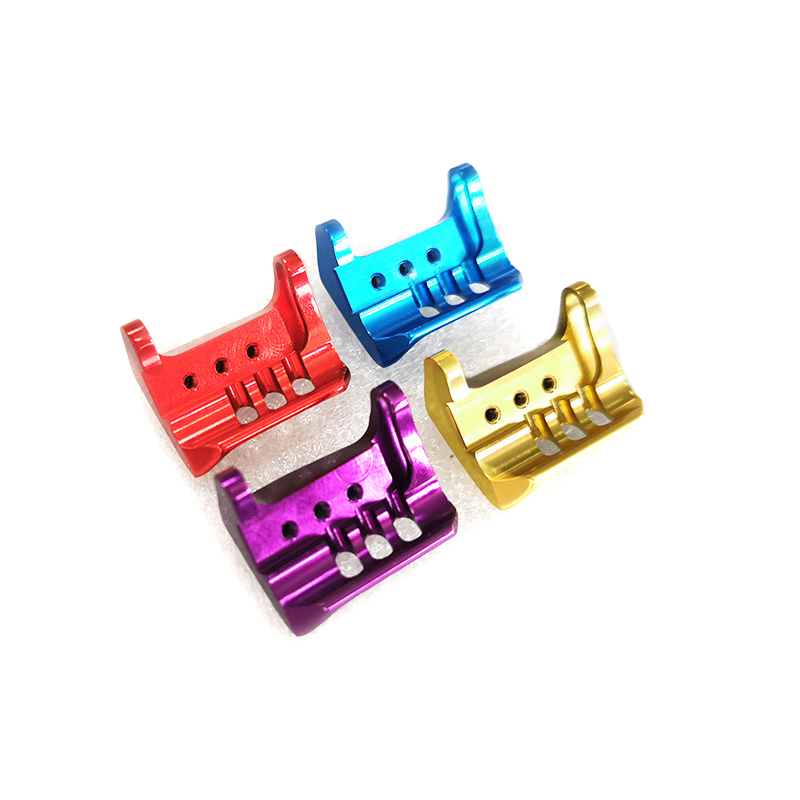
Hard Anodizing is an electrochemical process that deposits an oxide layer on a metal surface to provide corrosion protection. The anodised layer can be dyed in a variety of colours. Hard anodising produces a thicker, more durable and wear resistant aluminium oxide layer than regular anodising. People also refer to Hard Anodising as “Type III Anodising” or “Hard Coat Anodising,” following MIL-A-8625 specifications. Manufacturers commonly use this CNC finishing process on aluminium and titanium alloys (alkaline anodising) to improve their corrosion resistance, hardness, and overall durability.
Hard anodising offers the advantage of creating different colours on the metal surface by adding dyes during the anodising process.
The colour achieved through the hard anodising process depends on a number of factors including the type of metal being anodised, the anodising process parameters and the colourant used. Common hard anodised colours include black, red, blue, green and gold.
In addition to the aesthetic benefits of hard anodising, the process also provides additional protection to the metal surface. The dyes used in the anodising process absorb into the pores of the oxide layer, resulting in a thicker, more durable oxide layer that is less porous and less susceptible to wear and corrosion.
Hard anodizing colors have many applications and benefits, including:
Products that are commonly hard anodized include:
Aerospace components, such as aircraft parts
Automotive components, such as engine parts and wheels
Consumer products, such as sporting equipment and jewelry
Medical devices, such as surgical instruments and implants
Hard anodised colours provide a variety of benefits and find applications across a wide range of uses. The specific colour and finish achievable depend on several factors, including the metal undergoing anodising, the anodising process applied, and the dyes or pigments utilized in the process.
PROTO MFG is your operating system for custom manufacturing that makes part procurement faster, easier, and more efficient.